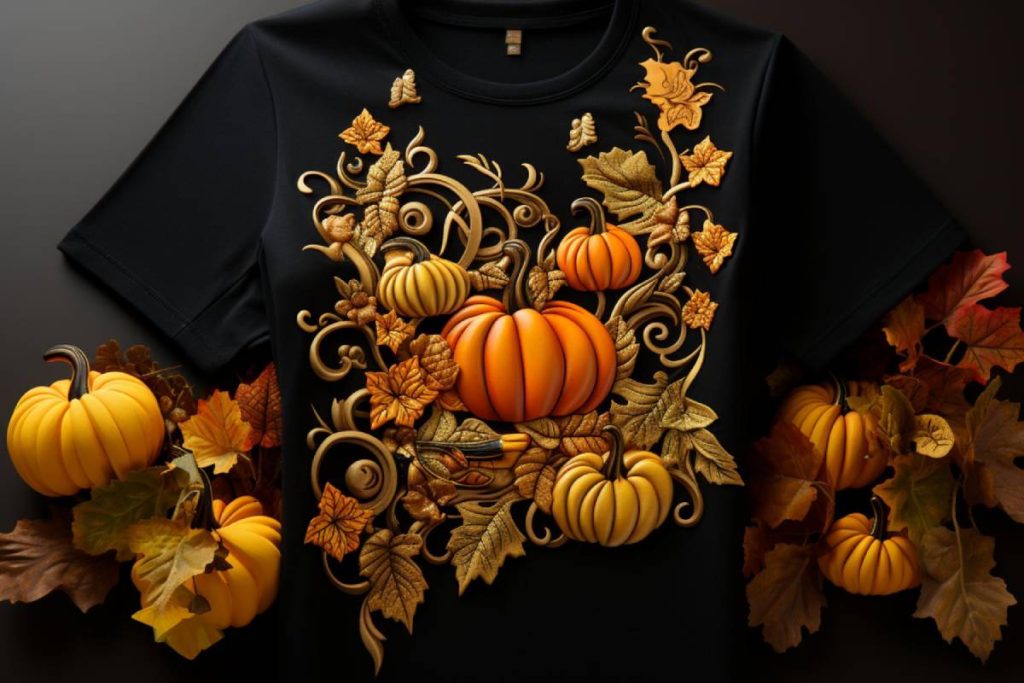UV DTF printing, or Ultraviolet Direct to Film printing, is revolutionizing the world of customized printing with its remarkable speed and durability. By employing advanced direct to film technology, this innovative method utilizes the UV curing process to produce stunning visuals that adhere flawlessly to various materials. As a result, business owners can enjoy enhanced printing durability while also addressing their customers’ demand for personalized designs. Not only does UV DTF printing enhance the quality of outputs, but it also promotes sustainable printing practices by reducing harmful emissions. With its blend of technological prowess and environmental consciousness, UV DTF is setting a new standard in the printing industry.
Also referred to as Ultraviolet Direct to Film technology, this printing method captures the essence of modern customization trends by combining high-speed production with remarkable fidelity. Utilizing a unique combination of UV-based inks and heat transfer techniques, it facilitates vibrant prints on a range of substrates. One of the major benefits is the extended durability of the print, which is crucial for items exposed to varying environmental conditions. Furthermore, this approach aligns with a growing emphasis on sustainable printing solutions, minimizing the release of VOCs commonly associated with traditional methods. The versatility and efficiency of this technology continue to drive its adoption across industries, enhancing its place in the evolving landscape of print technology.
Exploring the Advantages of UV DTF Printing
UV DTF printing is revolutionizing the way businesses approach custom printing needs due to its competitive advantages. One of the primary benefits is the speed of production. Traditional printing methods often involve longer drying times and multiple steps that can slow down the process. However, UV DTF technology utilizes rapid curing through ultraviolet light, allowing prints to dry almost instantaneously after they’re created. This not only accelerates production rates but also opens up new possibilities for just-in-time printing where businesses can respond quickly to market demands.
Furthermore, another significant advantage of UV DTF printing lies in its durability. The inks used in this process are cured under UV light, resulting in prints that are resistant to fading, scratching, and wear over time. This makes it an ideal choice for products that will face external conditions, such as outdoor signs, promotional materials, and clothing. As quality-conscious consumers increasingly demand top-notch products, the durability of UV DTF prints ensures that businesses can satisfy these expectations without incurring additional costs associated with reprints or replacements.
Understanding the UV Curing Process in DTF
The UV curing process is a pivotal component of UV DTF technology, playing a crucial role in defining the print’s quality and durability. During this process, UV light initiates a photochemical reaction in the specially formulated inks, causing them to harden and bond with the substrate almost instantly. This reaction not only ensures a quick turnaround but also enhances the vibrancy of colors, offering businesses a superior product that stands out in the marketplace. The precision achieved through this process significantly improves the overall aesthetic appeal of prints.
Moreover, the UV curing process contributes to sustainable printing practices. Traditional inks often require solvents that can release volatile organic compounds (VOCs) into the environment. In contrast, UV DTF printing utilizes inks that reduce this environmental footprint, making it a more eco-friendly option in the printing industry. As consumers become more environmentally conscious, adopting technologies that minimize environmental impact, such as the UV curing process in UV DTF, positions businesses favorably within a competitive landscape.
Customization and Personalization in UV DTF Printing
As consumer preferences shift towards personalized products, UV DTF printing emerges as a champion of customization. This technology supports intricate designs and detailed graphics, enabling businesses to meet the needs of clients seeking unique, tailored solutions. For example, custom apparel branding can be easily achieved with UV DTF, offering customers the ability to create one-of-a-kind items that reflect their individual tastes. This capability allows businesses to enhance customer satisfaction and foster loyalty, as consumers appreciate the opportunity to express their identity through customized products.
Additionally, the versatility of UV DTF technology allows for customization across various materials, from textiles to hard surfaces. This adaptability ensures that businesses can cater to diverse markets and product types, whether it’s promotional merchandise, fashion items, or specialized industrial applications. The ease with which UV DTF can produce short runs of customized items makes it a sought-after solution in niches that require flexibility and creativity, ultimately aiding companies in standing out in an increasingly competitive landscape.
The Role of UV DTF in Sustainable Printing
Sustainability is becoming a paramount concern in the printing industry, and UV DTF technology aligns seamlessly with this movement. By minimizing the release of harmful volatile organic compounds (VOCs) during the printing process, UV DTF supports a healthier environment. This is critical not only for the workforce involved in the printing process but also for the consumers who utilize these products. The shift towards more eco-conscious practices is not merely a trend; it has become a necessity for companies aiming to enhance their brand image and appeal to environmentally aware customers.
Furthermore, many manufacturers are now adopting the production of eco-friendly inks specifically designed for UV DTF printing. These inks are formulated to reduce environmental impact while maintaining high-quality print standards. This evolution in ink technology not only supports sustainable practices but also drives innovation within the industry, encouraging more companies to transition towards greener options. As UV DTF continues to establish itself at the forefront of sustainable printing, it represents a crucial step towards an environmentally-responsible future in digital printing.
Market Trends Driving UV DTF Adoption
The growth trajectory of UV DTF printing technology is being heavily influenced by current market trends that favor quick and customized printing solutions. As more businesses recognize the advantages of UV DTF, demand has surged. This trend is directly related to consumer behavior, which increasingly favors personalized services and products over mass-produced items. Companies that can react swiftly to these preferences by using UV DTF technology are likely to gain a competitive edge, establishing themselves as leaders in their respective niches.
Moreover, the increasing efficiency of UV DTF printing processes means that businesses can expand their offerings without significantly increasing production costs. With advancements in machinery and printing techniques, including the integration of direct to film technology, operations can be streamlined to prioritize efficiency without sacrificing quality. As companies strive for operational excellence in a fast-paced market, the adoption of UV DTF printing represents a strategic move that aligns business operations with consumer demands for speed, quality, and personalization.
Frequently Asked Questions
What is UV DTF printing and how does it differ from traditional methods?
UV DTF printing, or Ultraviolet Direct to Film printing, is a modern technique that uses UV light to cure inks printed on a film substrate. Unlike traditional printing methods that often rely on solvent-based inks and longer drying times, UV DTF utilizes UV-reactive inks that dry almost instantly under UV exposure. This results in high-quality prints with vibrant colors and exceptional durability.
What are the advantages of using UV DTF printing technology?
The advantages of UV DTF printing include faster production rates due to its quick curing process, exceptional durability from UV-cured inks which resist fading and weathering, and versatile application across various materials such as fabrics, plastics, and metals. This makes UV DTF an ideal choice for businesses needing reliable and high-quality printing solutions.
How does the UV curing process benefit UV DTF printing?
The UV curing process is essential in UV DTF printing as it activates the curing agents in the UV-reactive inks, solidifying them almost instantly. This rapid drying time significantly increases production efficiency and ensures a strong bond between the ink and the substrate, enhancing the durability of the printed designs. It also minimizes the risk of smudging or damage during handling.
Can UV DTF printing be used for customized printing applications?
Yes, UV DTF printing is highly suitable for customized printing applications. It allows for detailed designs to be transferred onto various materials in short runs, catering to the rising consumer demand for personalized products. This flexibility in producing tailored prints makes UV DTF a popular choice among businesses looking to offer unique and customized solutions.
What materials can benefit from UV DTF printing technology?
UV DTF printing technology is versatile and can adhere to a wide range of materials, including textiles, plastics, metals, wood, and more. This adaptability allows businesses to use UV DTF for diverse applications, from promotional items and signage to fashion and personalized gifts, making it a valuable asset in the printing industry.
How does UV DTF printing contribute to sustainable printing practices?
UV DTF printing contributes to sustainable printing practices by releasing fewer volatile organic compounds (VOCs) compared to traditional printing methods. This lower environmental impact aligns with the growing emphasis on sustainability in the printing sector, making UV DTF an eco-friendly option for businesses looking to reduce their ecological footprint while maintaining print quality.
| Key Components | Details |
|---|---|
| Definition | UV Direct to Film (UV DTF) is a modern printing technique utilizing UV light to cure ink on film for high-quality transfers to various materials. |
| Printing Process | The design is printed on a special film with UV-reactive inks, ensuring vibrant and accurate results. |
| Curing Process | UV light activates curing agents in the ink, bonding it instantly to the substrate. |
| Transfer Method | Heat transfer methods apply the cured film onto the desired surface for detailed print capture. |
| Advantages | Fast production times, exceptional durability, and versatility across material types. |
| Environmental Impact | Lower VOC emissions compared to traditional printing methods, contributing to sustainability. |
| Market Trends | Increasing consumer demand for personalization and customizable print solutions. |
| Innovations | Development of eco-friendly inks and supportive machine innovations by leading brands. |
Summary
UV DTF printing is a revolutionary technology that meets the increasing demands for high-quality, durable prints. By combining UV curing with direct film application, businesses can achieve rapid production times without compromising on detail or vibrancy. This printing method’s versatility allows it to work seamlessly with a variety of materials, making it an ideal choice in diverse industries. Furthermore, UV DTF printing emphasizes sustainability by reducing harmful emissions compared to traditional methods, which aligns with the contemporary focus on environmental responsibility. As the industry continues to innovate, staying informed about advancements in UV DTF will be crucial for those seeking to leverage the latest printing technologies.



